Astronomy may not hold direct importance for every individual, but our collective curiosity has led to significant technological advancements for our planet.
The Definition of Astronomy
Put simply, astronomy is the scientific study of the sky and celestial bodies. In ancient times, astronomers observed and analyzed everything occurring in the sky above the clouds – from the sun and stars to the moon and planets, as well as the mesmerizing phenomenon of the aurora borealis and shooting stars. Astronomers also took note of extraordinary cosmic events, such as supernovae, new starbursts, and the appearance of comets with tails. Their field of study extended to atmospheric phenomena, including the occasional appearance of halos around the moon or sun.
In the present day, astronomers focus their research on objects and physical phenomena that exist beyond the Earth’s thick atmosphere. These include cosmic bodies and the entirety of the cosmos. It can be stated that astronomers dedicate their studies to examining the composition, origins, and development of celestial bodies.
The diligent work of astronomers has yielded fruitful results. Throughout the past several centuries, they have constructed a remarkable, awe-inspiring depiction of the universe.

Astronomers have discovered a remarkable cluster of galaxies located in the constellation Veronica’s Hair. This stunning image, captured by NASA’s Hubble Space Telescope, showcases the beauty and vastness of our universe.
Scientists have determined that our universe is an expansive entity, estimated to be around fourteen billion years old. Its sheer size is mind-boggling, with light, the fastest known entity, taking billions of years to traverse its farthest reaches due to the ongoing expansion of space. The universe contains an inconceivable number of galaxies, each one home to billions of stars. These galaxies can be thought of as individual star islands, separated by vast stretches of empty space.
We are located in one of the galaxies known as the Milky Way. The Milky Way consists of approximately 400 billion stars. All of the stars visible in the night sky belong to the Milky Way.
The Sun is an average star, not too big or small, bright or dim, heavy or light. It falls somewhere in the middle among the wide variety of stars.
Surrounding the Sun are at least eight large planets, a dozen smaller planets (dwarf planets), millions of asteroids and comets, as well as numerous smaller bodies such as rocks and meteoroids. Collectively, they form the solar system.
Not too long ago, the existence of similar systems in other stars was uncertain. However, in the past three decades, astronomers have acquired the ability to locate and examine these systems. It is now evident that nearly every star within our galaxy possesses a minimum of one planet. It won’t be long before scientists can identify planets resembling Earth in distant stars.

Over the mountains in Slovakia, you can witness the magnificent Milky Way. Photo: Vaclav Hyza
In the present day, there is a plethora of captivating books featuring stunning illustrations, providing a comprehensive description of the planets in our solar system, the stars, the intricate composition of the Milky Way and other galaxies, as well as the captivating history and evolution of the entire universe. However, what many fail to mention is that these awe-inspiring objects can be observed firsthand if one desires.. In some cases, a small telescope or even a pair of binoculars will suffice, and at times, our own eyes are sufficient to witness certain astronomical phenomena.
Astronomy as a pastime
Astronomy is often deemed as a precise discipline, comparable to math or physics. To pursue a career in astronomy, one must possess a firm understanding of physics (and sometimes even chemistry), specialized mathematical tools, and programming skills. Furthermore, the field involves a great deal of routine work, consisting of refining existing knowledge and meticulously searching for new discoveries.
While astronomers themselves view their profession as highly romantic, many individuals find the abundance of formulas and calculations overwhelmingly complex and tedious.
If you happen to be one of those individuals, let me put your mind at ease: you don’t need to be a mathematical genius to enjoy astronomy as a personal hobby and appreciate the beauty of the night sky!
So, what do you need?
The Celestron Astromaster 130 eq telescope is a budget-friendly option for amateur stargazing with an equatorial mount (tripod). Source: Rother Valley Optics
Eventually, you will discover that certain objects or types of observations captivate you more than others, and that’s when you should consider investing in specialized equipment – it may be more expensive, but it will also offer better quality.
It’s possible that the equipment you currently have will suffice and you will enjoy leisurely strolls through the stars. Alternatively, you may reach a point where you realize that astronomical observation is not your cup of tea and decide to move on. Like any hobby, amateur astronomy is primarily about having fun and finding relaxation, and everything else comes secondary. If stargazing fails to evoke positive emotions in you, then it might not be the right pursuit for you.
Incidentally, if I were in your position, I wouldn’t underestimate the valuable opportunity presented by observing astronomical phenomena. Are you aware that in the present day, individuals who have a passion for astronomy frequently stumble upon groundbreaking discoveries? These individuals unearth previously unidentified celestial bodies such as asteroids, comets, variable stars, supernovae, new stars, and even new nebulae!
You have the potential to make a revolutionary discovery in the field of astronomy yourself! (Of course, this won’t happen immediately, but rather after you acquire a basic understanding of astronomical observations.) This is not a joke! Nowadays, with a multitude of exceptional telescopes available to professional astronomers, the likelihood of making a significant discovery is not diminishing! The catch is that larger telescopes are primarily utilized to study specific objects – no one would employ the Hubble Space Telescope to search for new comets or to closely examine Jupiter. However, there is still ample room for ambitious amateurs to explore.
Astronomy has practical value as it helps us transcend our own limitations; it has practical value because it is grand; it has practical value because it is aesthetically pleasing. It is through astronomy that we learn about the insignificance of the human body and the magnitude of the human spirit.
Henri Poincaré
What is the focus of the field of Astronomy?
Astronomy is the branch of science that deals with the study of the universe’s structure. It explores the position, movement, physical characteristics, origin, and development of celestial bodies and systems. Additionally, astronomy focuses on understanding the fundamental properties of the surrounding universe. In particular, it examines the Sun, stars, planets and their moons, black holes, galaxies, nebulae, quasars, asteroids, and other celestial entities. Astronomy is a discipline that aims to unravel the enigmatic phenomena that transpire in the universe and shed light on our existence.
Astronomy can be said to have originated when humans began questioning the structure of our world. Initially, ideas about the Universe were primitive and rooted in religion. However, around the 6th or 4th century BC, people started studying the stars and their movements. As mathematical knowledge and physical research advanced, our understanding of the Universe improved. The first astronomical revolution occurred around 1500 BC, leading to the emergence of spherical astronomy, accurate calendars, and astrometry. The origins of astronomy can be traced back to the Babylonian priests who compiled astronomical tables, the Mayan calendars, and the knowledge passed down from ancient China and Egypt. It was the ancient Greek scientists, particularly Pythagoras, who first proposed that the Earth is spherical, and Aristarchus of Samos who suggested that the Earth revolves around the Sun. The geocentric theory of the world was a major achievement during this period. Galileo also made significant contributions to the development of astronomy.
Since the introduction of telescopes, scientists have made groundbreaking discoveries in astronomy. One of their most notable achievements was the identification of the Milky Way and other galactic domains. However, it wasn’t until the early 20th century that the field of astronomy experienced exponential growth. The most significant breakthrough during this time was the development of the theory of the universe’s evolution, which posits that it expands as time progresses.
Which areas are encompassed in the field of astronomy?
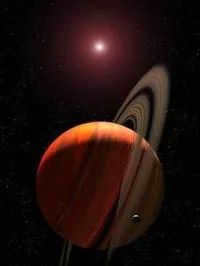
Astronomy, a scientific field dedicated to the study of the universe, encompasses various branches:
- Astrometry: This discipline focuses on analyzing the motion and precise location of celestial objects.
- Celestial Mechanics: It aims to determine the mass and shape of stars, as well as investigate the laws governing their movement under gravitational forces.
- Theoretical astronomy: Theoretical scientists in this field develop computer and analytical models to understand the behavior of celestial bodies and phenomena.
- Astrophysics: This branch delves into the examination of the physical and chemical properties of cosmic objects.
- Archaeoastronomy: The study of astronomical history allows researchers to uncover ancient cosmic knowledge and practices.
Moreover, there are segments dedicated to investigating the patterns of how stars and planets are positioned in space, as well as examining the development of celestial entities.
There have been surprising and highly significant findings, including the presence of dark matter and dark energy. Prior to this, it was already established that our Universe is expanding and that the gap between galaxies is increasing over time. However, we have now discovered that the expansion is occurring at an even faster rate than previously thought.
Innovative Medicines
Astronomical innovations have played a crucial role in the development of various medical imaging tools, such as CAT scanners and MRI scanners. Moreover, cutting-edge software originally designed for processing satellite images from space is now proving beneficial in the early detection of Alzheimer’s disease.
The AlzTools 3d Slicer program is a remarkable outcome of the knowledge and expertise gained from the Envisat ESA satellite. Additionally, a charge-coupled device (CCD) is currently being engineered to minimize the adverse effects of X-rays. Notably, these technologies, which were initially utilized in the field of astronomy as early as 1976, have now paved the way for remarkable advancements in medical imaging.
Astronomy and security
The Video Analysis System (VAS) assists intelligence agencies in analyzing video footage by utilizing NASA’s video stabilization and recording technology, VISAR. Comparable technologies are employed to enhance the nighttime video images captured by video cameras.
Military forces also employ the Ultraviolet (UV) photon detection technology developed by astronomers. This technology is utilized in electronic defense systems to counter missile attacks.
Astronomical detectors capable of identifying individual X-ray photons are now being utilized in airports, specifically in X-ray chambers. Additionally, a gas chromatograph originally designed to study the Martian atmosphere is now being utilized to analyze luggage for explosive materials.
Astronomy is making a comeback in schools. Who will teach it and how?

Now let’s talk about something very important. The Ministry of Education and Science of the Russian Federation has recently released an official order dated 20.06.2017. This order outlines the organization of the study of the academic subject “Astronomy” and includes a set of methodological recommendations for introducing this discipline as a mandatory course.
The guidelines state that in order to effectively organize work, the mandatory subject of secondary education should be allocated at least 35 hours for a two-year study period. Similar to the Soviet school system, astronomy is not included as a subject for the Unified State Exam, even on a voluntary basis. However, this time, there are plans to incorporate astronomy questions into the physics section of the exam. The training and retraining of personnel, as well as the development of textbooks and material resources, are currently in the planning and development stages.
“Orphan” came back to the temple of knowledge, but once again was placed in a corner. Not everyone will become astrophysicists, as astronomy is an intricate and multifaceted field of study. The country needs scientists in this area, rather than a large number of ordinary technicians. However, perhaps with a more diligent approach to learning the subject in school, over time it would have been possible to cultivate skilled astronomy teachers who could ignite an interest in the science and explain its significance to future generations. No one is saying that one should not learn the rules of the road if they don’t plan on driving a car.
It is fortunate that astronomy has returned to the curriculum in schools. As long as we don’t accidentally step on any old garden tools! The past should always strive for the future, and this is a topic to be seriously and permanently considered.
There is probably not a single person on the entire planet who hasn’t pondered the inexplicable twinkling dots in the night sky. Why does the Moon orbit the Earth? Astronomy explores these mysteries and more. What are planets, stars, and comets? When will there be an eclipse and why are there tides in the ocean? These questions and many others are answered by the field of science. Let us explore its origins and significance for humanity.
Science: Definition and Structure
The field of science known as astronomy focuses on the structure and origin of various cosmic bodies, celestial mechanics, and the development of the universe. The word “astronomy” originates from two ancient Greek terms, with the first meaning “star” and the second meaning “establishment” or “custom”.
In this discussion, we will explore the formation and organization of this scientific discipline, which currently encompasses several narrower subfields.
Astrophysics is a branch of astronomy that studies the composition and properties of celestial bodies. One of its subsections is stellar astronomy.
Celestial mechanics is concerned with understanding the motion and interaction of cosmic objects.
Cosmogony specifically focuses on the origin and evolution of the universe.
Therefore, in the present day, utilizing advanced technology, ordinary earth sciences have the capacity to expand their scope of study well beyond our planet.
Theme and goals
Within the vast cosmos, it has been discovered that there exist numerous diverse celestial bodies and objects. All of these are meticulously analyzed and essentially form the foundation of astronomy. Galaxies and stars, planets and meteors, comets and antimatter – these are just a fraction of the inquiries that this field of study presents.
Recently, an intriguing opportunity for practical space exploration has emerged. As a result, astronautics (or space science) has proudly taken its place alongside academic researchers.

This has been a desire of humanity for a considerable amount of time. The initial documented narrative is Somnium, composed in the early 17th century. It was not until the 20th century that individuals were able to observe our planet from an external perspective and explore the Earth’s natural satellite, the Moon.
The subject matters of astronomy extend beyond these particular concerns. In the following paragraphs, we will delve into these topics in greater detail.
What methodologies are utilized to address these issues? The oldest and most fundamental technique is observation. More recent developments include spectral analysis, photography, the launch of space stations, and the creation of artificial satellites.
Currently, there is still a lack of adequate research on the origins and development of the Universe and individual objects. This is due to two main factors: insufficient available data and the extreme distance of many celestial bodies, making accurate study challenging.
Different categories of observations
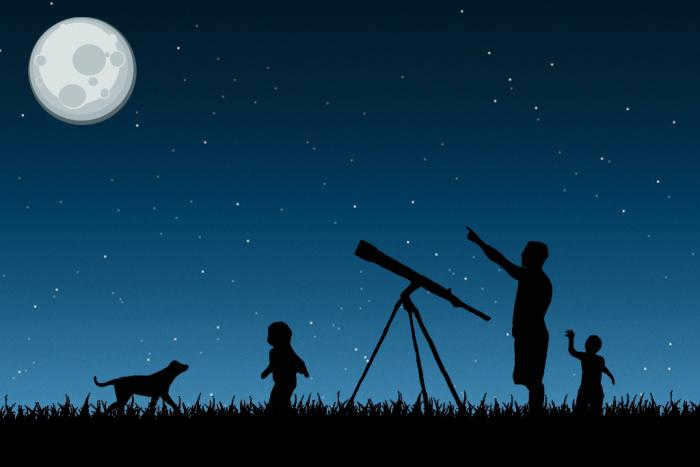
In the early days, humanity could only boast of basic visual sky observation. However, even with this primitive method, incredible results were achieved, which we will discuss later.
Astronomy and space are more closely linked today than ever before. The use of cutting-edge technology allows for the study of celestial objects, leading to the development of various branches within this field. Let’s take a closer look at them.
Optical method. This is the oldest form of observation, relying on the naked eye, binoculars, telescopes, and more recently, photography.
The significance of astronomy cannot be overstated, as it provides answers to one of the timeless inquiries: where did we originate from?
The subsequent methods scrutinize the cosmos for gamma rays, X-ray waves, and ultraviolet light.
There are also procedures that don’t involve electromagnetic radiation. One such method is grounded in the neutrino nucleus theory. The gravitational-wave discipline investigates the universe through the propagation of these two phenomena.
Thus, the range of observations presently known has greatly broadened mankind’s possibilities in the realm of space exploration.
Now, let us delve into the process of the establishment of this scientific field.
Origin and Early Stages of Scientific Development
In ancient times, during the primitive communal system, people were just beginning to explore the world and understand natural phenomena. They attempted to comprehend the cycles of day and night, the changing seasons, and the behavior of mysterious phenomena such as thunder, lightning, and comets. The nature of the Sun and the Moon remained a mystery, and they were often worshipped as deities.
However, even during the height of the Sumerian civilization, priests in ziggurats were already undertaking complex calculations. They divided the visible celestial bodies into constellations, established the familiar “zodiacal belt,” and developed a lunar calendar consisting of thirteen months. They also discovered the “Meton cycle,” although the Chinese had made similar observations slightly earlier.
The Egyptians carried on with their exploration of celestial objects, delving deeper into their studies. They found themselves in a unique position, as the Nile River would overflow in the early summer, coinciding with the appearance of the star Sirius on the horizon. During the winter months, this star remained hidden in the sky of the opposite hemisphere.
In Egypt, they were the first to divide the day into 24 hours. However, initially, they adopted a ten-day week, resulting in a month consisting of three decades.
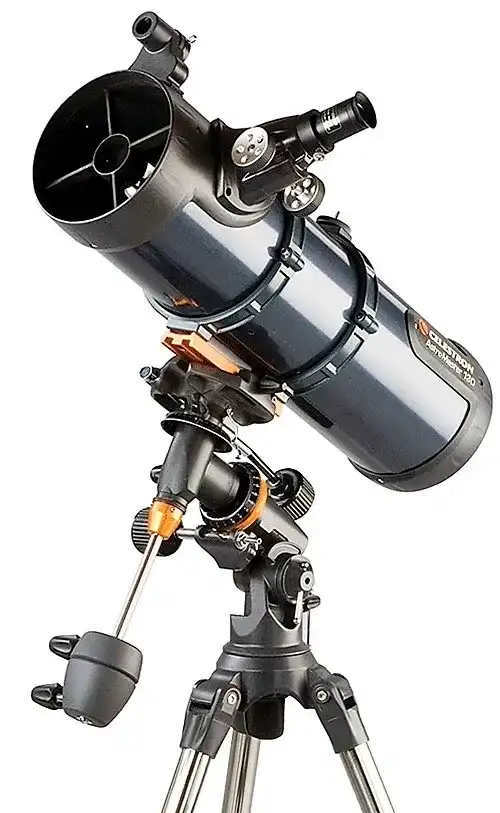
Nonetheless, China witnessed the most significant advancements in ancient astronomy. They were able to accurately calculate the length of a year, predict solar and lunar eclipses, and monitor comets, sunspots, and other extraordinary phenomena. The first observatories emerged at the conclusion of the second millennium BC.
The era of ancient times
The history of astronomy, as we know it today, would not be complete without the contributions of ancient Greece, including their constellations and terms in celestial mechanics. While the Greeks initially made some incorrect observations, they eventually made significant progress in their understanding. For instance, they erroneously believed that Venus appearing in the morning and evening were two separate objects.
The Pythagoreans were among the first to focus on this field of study. They understood that the Earth was spherical in shape and that day and night occurred due to its rotation on its axis.
Claudius Ptolemy stands as the final luminary of the ancient world, his name eternally preserved in the annals of astronomy. It was his brilliant mistake that would shape the course of humanity for centuries to come. Ptolemy famously demonstrated the hypothesis that the Earth occupies the center of the universe, with all celestial bodies revolving around it. However, the rise of militant Christianity in the wake of the Roman world’s decline led to the abandonment of numerous scientific pursuits, including astronomy. In this new era, the mysteries of the Milky Way and the Earth’s circumference held little interest, as debates centered instead on the theological question of how many angels could pass through the eye of a needle. Thus, the geocentric model of the universe stood as the accepted truth for countless generations.
Indian astronomy
The Incas had a unique perspective on the firmament compared to other ancient peoples. In the realm of astronomy, which studies the movements and characteristics of celestial bodies, the Inca tribe had a particular reverence for the “Great Celestial River” – the Milky Way. On Earth, this river was believed to manifest as the Vilcanota, the main river near the city of Cuzco, which served as the capital of the Inca Empire. According to their beliefs, when the Sun set in the west, it descended into the depths of this river and traveled along it to rise again in the eastern part of the sky.
It is well-documented that the Incas were able to identify and observe several planets, including the Moon, Jupiter, Saturn, and Venus, even without the aid of telescopes. These observations were on par with the achievements of Galileo, who utilized optics to make similar discoveries.
The observatory possessed a total of twelve pillars, strategically situated on a hill in close proximity to the capital. These pillars played a crucial role in determining the precise position of the Sun in the celestial sphere, as well as accurately tracking the progression of the seasons and months.


The Maya, in contrast to the Incas, possessed a profound knowledge. Much of what is studied in astronomy today, they were already aware of. They accurately calculated the length of a year, dividing the month into two weeks of thirteen days each. The starting point of their chronology was established as 3113 BC.
Hence, it is evident that in the ancient world and among the “barbarian” tribes, as they were labeled by the “civilized” Europeans, the study of astronomy had reached a remarkably advanced level. Now, let us explore what Europe could boast of after the decline of the ancient empires.
The Medieval Era
Thanks to the fervor of the Inquisition during the later years of the Medieval Era and the limited progress of civilizations in the earlier part of this period, numerous fields of study experienced regression. While in ancient times, individuals were well aware of the nature of astronomy and many showed interest in this subject, theology became the dominant focus during the Medieval Era. Discussing the idea that the Earth is spherical and that the Sun is positioned at its center could result in being condemned to death by burning at the stake. Such statements were deemed sacrilegious and those who made them were labeled as heretics.
Ironically, the revival of knowledge came from the east, via the Pyrenees. The Arabs brought to Catalonia the wisdom that had been preserved by their ancestors since the time of Alexander the Great.
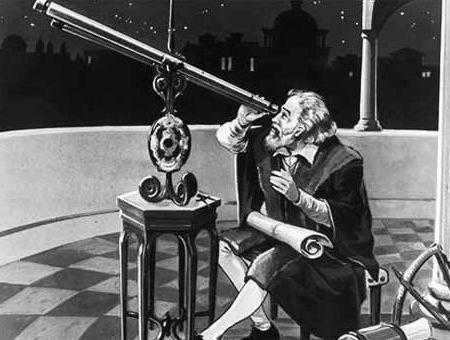
During the 15th century, Cardinal Cusanus controversially posited that the universe was endless, contradicting the prevailing belief of Ptolemy. These assertions were deemed sacrilegious, yet remarkably progressive for their era, resulting in their dismissal as nonsensical.
However, the revolution was ultimately catalyzed by Copernicus, who had the audacity to publish his lifelong investigations prior to his passing. He substantiated that the Sun occupies the central position, with the Earth and other planets orbiting around it.
Celestial Bodies in Space
Planets are fascinating objects that revolve around the sun in our solar system. They derive their name from the ancient Greek word for “wanderer” due to their apparent movement across the night sky. While we remain stationary, these celestial bodies embark on a daily journey, giving the illusion of wandering stars.
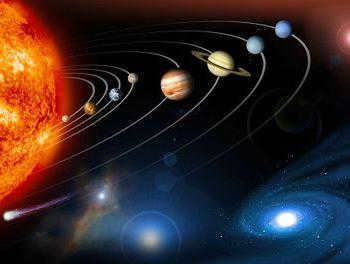

What sets them apart from other entities in the cosmos? One distinguishing factor is their relatively small size. This allows them to clear their path of planetesimals and other debris, but it is insufficient to initiate a thermonuclear reaction like a star.
Secondly, their mass causes them to assume a spherical shape, and certain processes lead to the formation of a dense surface. Thirdly, planets typically orbit within a specific system around a star or its remnants.
These celestial bodies were viewed by ancient civilizations as “messengers” of the gods or demigods, of lower status than, for instance, the Moon or the Sun.
Then came the age of the “Ptolemaic concept of the universe.” Throughout this period, it was widely believed that all planets and other celestial objects revolved around the Earth, with our planet itself occupying the center of the universe.
However, it was the pioneering observations made by Galileo Galilei with the aid of the first telescopes that first revealed our system’s true nature, with all bodies orbiting around the Sun. Unfortunately, Galileo faced persecution at the hands of the Inquisition and was forced into silence. Nevertheless, the quest for knowledge continued.
According to the definition accepted by the majority today, only bodies of significant mass that orbit a star are categorized as planets. The rest are classified as satellites, asteroids, and similar objects. In the realm of science, there are no loners among these ranks.
One important characteristic of planets is their inclined axis in relation to their orbit. This causes the hemispheres to receive varying amounts of light and radiation as they rotate, resulting in the formation of different seasons and climate zones on Earth.
Another important aspect is that planets not only orbit around a star but also rotate around their own axis. This rotation determines the length of a day.
Lastly, planets have a clear orbital path. To function properly, a planet must clear its path of any smaller objects and travel independently without any competitors.
Our solar system consists of various planets. In total, there are eight planets according to the field of astronomy. The initial four are categorized as the “terrestrial group” which includes Mercury, Venus, Earth, and Mars. The remaining four are classified as gas (Jupiter, Saturn) and ice (Uranus, Neptune) giants.
The Celestial Bodies
Every night, we observe the celestial bodies in the sky. A dark expanse filled with shimmering specks. These specks form constellations, which have inspired the field of astronomy. So, what exactly is a celestial body?

According to scientists, the human eye, if it has a good enough level of vision, can observe around three thousand celestial objects in each hemisphere. These mesmerizing entities have always fascinated humanity with their shimmering and otherworldly presence. Now, let us delve into them in more detail.
Therefore, a star can be defined as a massive accumulation of gas, a specific cloud with a considerably high density. Within these stars, thermonuclear reactions are either currently happening or have taken place in the past. The mass of such celestial bodies enables them to create systems around them.
When it comes to studying these celestial bodies, scientists have managed to establish various methods of categorization. You might be familiar with terms like “red dwarfs,” “white giants,” and other inhabitants of the universe. Nowadays, one of the most widely used classification systems is the Morgan-Keenan typology.
This typology involves grouping stars based on their magnitude and emission spectrum. These groups are named using letters from the Latin alphabet in descending order: O, B, A, F, G, K, M. To provide you with a bit of context and a starting point, our very own Sun falls into the “G” group according to this classification.
Now, let’s explore the origins of these giants. They are formed from the most abundant gases in the universe, namely hydrogen and helium. Through gravitational compression, they gradually acquire their distinct shape and mass.
Our Sun is the star at the center of our solar system, and the nearest star to us is Proxima Centauri. Proxima Centauri is part of the Alpha Centauri system and is located approximately 4.24 light-years away from us, which is equivalent to about 39 trillion kilometers.
In general, all stars are measured in comparison to the Sun, including their mass, size, and brightness in the spectrum. The distance to these celestial objects is typically measured in light-years or parsecs. One parsec is equivalent to about 3.26 light-years or approximately 30.85 trillion kilometers.
For astronomy enthusiasts, it is important to understand and be familiar with these astronomical figures.
Stars, like everything else in our vast universe, are born, evolve, and eventually die, often in spectacular explosions. The Harvard spectral classification system categorizes stars based on their color, ranging from blue (representing young stars) to red (representing older stars). Our Sun falls into the yellow category, indicating its “mature age”.
There are various types of stars, including brown and white dwarfs, red giants, variable stars, and many other subcategories. Their differences lie in the varying levels of metal content. This is important because the combustion of different substances through thermonuclear reactions enables the measurement of their radiation spectra.
Furthermore, there are also designations such as “new”, “supernova”, and “hypernova” that do not fully capture the essence of these phenomena. Stars simply age and often end their existence with an explosive event. These terms only indicate that they were only observed during the collapse phase, as they were previously undetectable even by the most advanced telescopes.
If you observe the sky from the vantage point of Earth, you will be able to observe the constellations clearly. In ancient times, these celestial formations were given names and were the subject of myths and legends, with gods and heroes being associated with them. Some of the names that have been passed down to us from the ancient Greeks include Pleiades, Cassiopeia, and Pegasus.
However, modern scientists have identified star systems that go beyond these individual constellations. To simplify things, imagine that instead of just one Sun in the sky, we are able to see two, three, or even more. This means that there are double, triple, and even cluster stars (where there are multiple stars in close proximity to each other).
In the following sections, we will explore some interesting aspects of practical astronomy. This will include topics such as meteor showers and other intriguing facts. Read on to discover more about these fascinating celestial phenomena.
The planet has the ability to “drift” into outer space for various reasons, such as its distance from the star. In the field of astronomy, this phenomenon is referred to as an “orphan planet”, although some scientists argue that these objects are actually protostars.
An intriguing aspect of the night sky is that it does not necessarily reflect the current state of celestial bodies. Many objects have already exploded and ceased to exist, yet their light continues to reach us due to their immense distance.
There has been a recent surge in the search for meteorites. However, distinguishing between a rock and an extraterrestrial object can be quite challenging. Fortunately, astronomy offers some captivating insights on this matter.
Firstly, a meteorite is more dense and heavier than the majority of materials found on Earth. Because it contains iron, it also possesses magnetic properties. Additionally, the surface of the celestial object will have melted as a result of experiencing extreme temperatures due to friction with Earth’s atmosphere during its descent.
We have discussed the key aspects of the field of astronomy. This includes information about stars and planets, the origins of the discipline, and some interesting facts that you have learned from this article.
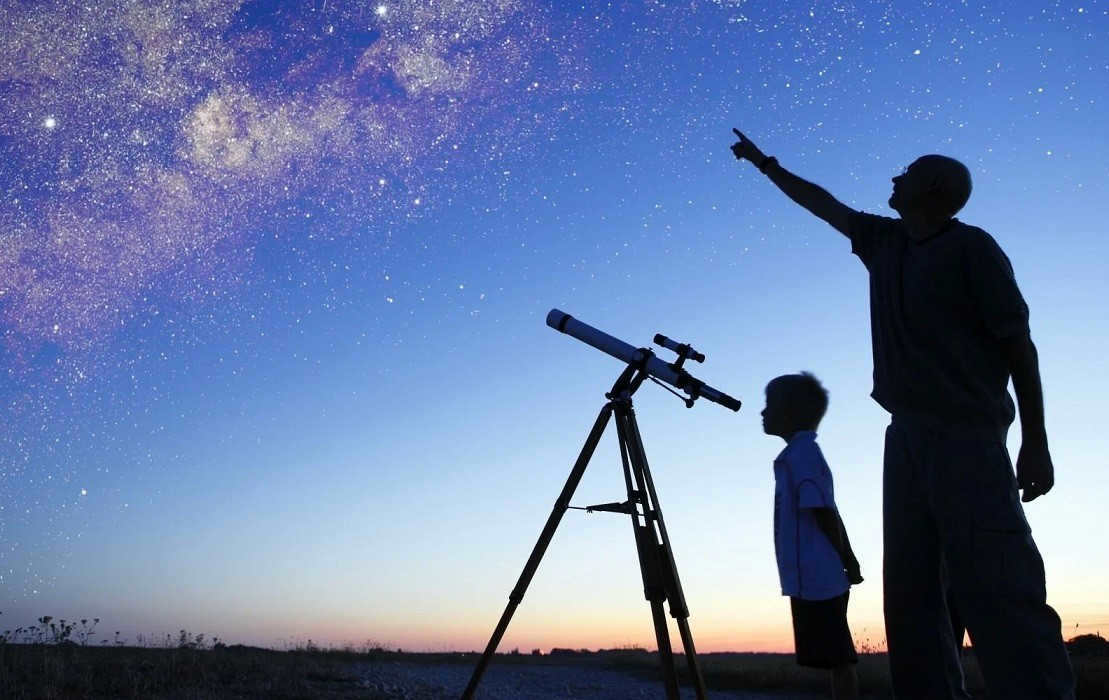

When we gaze up at the vast expanse of the night sky on a balmy summer evening, we can’t help but wonder about the mysteries that lie beyond. What lies out there? How is it all organized? And what is our place in this vast universe? These thoughts about the fragility of our existence on Earth and the immensity of the cosmos are deeply philosophical, but scientists approach the study of the stars with a different mindset. They delve into the starry sky with a desire to unravel its secrets, and their findings continue to astound us. So what exactly does the field of astronomy entail, and why is it so important?
Astronomy is a field of scientific study that focuses on understanding the structure and workings of the universe. It examines the position, movement, physical characteristics, origin, and development of celestial bodies and systems. Additionally, astronomy delves into the fundamental properties of the universe that surrounds us. This discipline encompasses the study of the Sun, stars, planets, their moons, black holes, galaxies, nebulae, quasars, asteroids, and various other astronomical phenomena. In essence, astronomy serves as a means to unravel the mysterious events that occur in the vast expanse of the Universe and shed light on the mysteries of our existence.
What was the time of origin for Astronomy?
The moment man began questioning the structure of our world, astronomy came into existence. Initially, primitive ideas about the universe derived from religion. Around the 6th or 4th century BC, people began studying the stars and their movements. As mathematical knowledge and physical research advanced, human understanding of the Universe improved. The first astronomical revolution occurred around 1500 BC, giving rise to spherical astronomy, accurate calendars, and astrometry. The Babylonian priests who created astronomical tables, the calendars of the Mayan tribes, and the knowledge passed down from Ancient China and Ancient Egypt all played a role in the origins of astronomy. Ancient Greek scientists, such as Pythagoras, were the first to suggest that the Earth was spherical, while Aristarchus of Samos proposed that the Earth revolves around the Sun. The geocentric theory of the world emerged as the main accomplishment during this period. Galileo made a significant contribution to the development of astronomy.
Scientists made a groundbreaking discovery with the introduction of telescopes – the Milky Way. This led to the exploration of numerous galactic realms, and since the early 1900s, the field of astronomy has made tremendous progress. One of the most significant accomplishments of modern scientists is the formulation of the theory of the universe’s evolution, which posits that it undergoes expansion as time progresses.
Astronomy, the study of the universe, encompasses various branches:
Astrometry. This field focuses on examining the motion and location of celestial objects.
Celestial Mechanics. It entails determining the mass and shape of stars, as well as investigating the laws governing their movement under gravitational forces.
Theoretical astronomy. Theoretical scientists develop computer and analytical models to understand celestial bodies and phenomena.
Astrophysics. This discipline investigates the physical and chemical properties of cosmic objects.
Archaeoastronomy. This branch delves into the history of astronomical knowledge and explores what cosmic understanding existed in ancient times.
Furthermore, there are segments dedicated to exploring the patterns of the spatial arrangement of stars and planets, and examining the progression of celestial objects.
Astronomy is fundamentally based on observation
Astronomers are unable to conduct experiments in the same way that physicists can. The majority of the information astronomers possess about celestial bodies is acquired through the use of electromagnetic radiation.
Studying the cosmos is an incredibly intricate and time-consuming process, requiring attentiveness, consistency, and focus. Consequently, discussing units of measurement such as meters and kilometers in relation to astronomy is simply impractical.
When we study the solar system, we often use a unit of measurement known as an astronomical unit (a.u.). An astronomical unit represents the major semi-axis of the Earth’s orbit and is equivalent to 149 million kilometers. In the field of stellar astronomy and cosmology, larger units of length are utilized, such as the light-year and the parsec, along with their derivatives like kiloparsec and megaparsec.
A light-year, for instance, is a measurement of distance that represents the distance traveled by a ray of light in one Earth year. It is approximately equal to 9.5 x 10^15 meters. On the other hand, a parsec is a unit historically used to measure distances to stars based on their parallax. One parsec is equivalent to 3.263 light-years, 206,265 astronomical units, or 3.086 x 10^16 meters.
Techniques employed in other fields of study, like mathematics and physics, are also extensively utilized in the realm of astronomy. The vast expanse of space is the sole environment where matter can endure extreme temperatures reaching hundreds of millions of degrees or near absolute zero, as well as exist in the vacuum of outer space and within neutron stars. In recent times, the progress made in the field of astronomy has found application in the domains of geology, biology, geography, and history.
Astronomy: A Fascinating Hobby
Astronomy and astronautics have always captivated the minds of millions of individuals. The global community of amateur astronomers is immeasurable, and it is often thanks to their efforts that numerous astronomical breakthroughs have been made. One remarkable instance occurred in 2009 when Australian enthusiast Anthony Wesley, while observing Jupiter, stumbled upon evidence of a celestial body’s impact on the planet, possibly a comet.
By engaging in astronomy, we gain insights into the laws of nature and witness the gradual evolution of our world. This captivating field significantly shapes people’s perspectives. However, in the early 21st century, topics such as galaxies and extraterrestrial life have gained popularity, unfortunately often accompanied by misinformation. The interest of journalists lacking expertise in space matters, combined with scientists’ opinions based on unverified data, has led many individuals to believe in pseudoscientific discoveries.


Is the Moon’s existence dependent on the observation of a mouse?
Albert Einstein
Astronomy is the study of the universe, encompassing the examination of celestial bodies and the systems they form, including their location, motion, structure, origin, and development.
In particular, astronomy examines the Sun, stars, planets and their moons within the solar system, exoplanets, asteroids, comets, meteorites, interplanetary and interstellar matter, pulsars, black holes, nebulae, galaxies and their clusters, quasars, and much more.
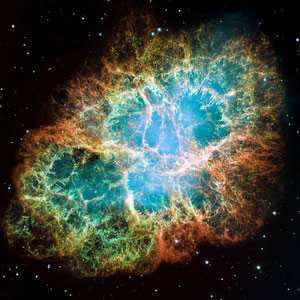
Astronomy is an ancient field of study that dates back to the early civilizations of Babylonians, Greeks, Chinese, Indians, and Mayans. These civilizations were already making systematic observations of the night sky. The invention of the telescope further propelled the advancement of astronomy.

In the 20th century, the field of astronomy became divided into two main branches: observational and theoretical. Observational astronomy involves the collection of data about celestial bodies through direct observation, which is then analyzed. Theoretical astronomy, on the other hand, focuses on the development of computer, mathematical, or analytical models to describe and understand astronomical objects and phenomena.
In 2009, the United Nations designated it as the International Year of Astronomy (IYA2009).

Aims of astronomy
- Astronomy aims to examine the apparent and actual positions and movements of celestial bodies in space, as well as determine their size and shape.
- It also focuses on investigating the structure, chemical composition, and physical properties (such as density and temperature) of celestial bodies.
- Astronomy seeks to solve the mysteries of the origin and development of individual celestial bodies and the systems they form.
- Additionally, it aims to study the fundamental properties of the Universe and construct a theory concerning the observable part of the Universe, known as the Metagalaxy.

Origin of astronomy
Ancient times
Astronomical observations can be traced back to sources dating back to at least the 6th to 4th millennium BC.
Ancient civilizations were aware of the periodic changes in the sky:
By observing the changes in the celestial sphere, people noticed their correlation with the changing seasons on Earth. This led to the concept that celestial movements are also linked to other earthly phenomena, such as influencing the course of history or predicting significant events such as the birth of kings, wars, famines, epidemics, and more. Ancient astronomers gave particular attention to rare and non-periodic phenomena like eclipses, comets, meteorites, and others.
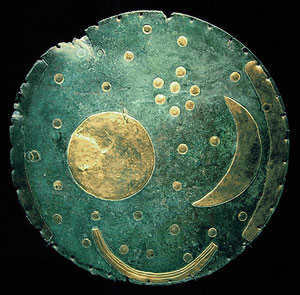
Sumer and Babylon
The Babylonian priests left behind numerous astronomical tables. They were also responsible for identifying the major constellations and the zodiac. Additionally, they introduced the concept of dividing a full angle into 360 degrees and made advancements in trigonometry. During the 2nd millennium B.C., the Sumerians utilized a lunar calendar, which was based on the moon’s cycles.
By utilizing their observational tables, the priests were able to discover many of the laws governing planetary motion, as well as those relating to the moon and the sun. They were also able to accurately predict eclipses.
It is believed that the seven-day week originated in Babylon, with each day being dedicated to one of the seven celestial bodies.
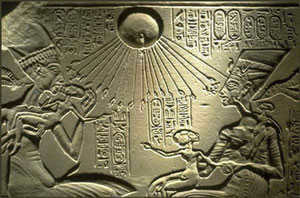
Ancient Egypt
The flooding of the Nile takes place in the early summer, coinciding with the first appearance of the brightest star in the sky, known as Sirius, or Sothis in Egyptian. Before this time, Sirius remains unseen.
The ancient Egyptians believed in a geocentric model of the universe, with the exception of Mercury and Venus, which were believed to orbit the Sun. The upper planets were seen as manifestations of the god Horus, while the lower planets were considered as one entity, with no distinction between them. The ancient Egyptians divided the sky into constellations, as evidenced by texts and depictions on temple and tomb ceilings. A total of 45 constellations were known in ancient Egypt.

Ancient China
In ancient China, the Chinese people had a unique way of measuring the length of the solar year, which was determined to be 365.25 days. They divided the celestial circle into 365.25 degrees or 28 constellations, based on the movement of the Moon.
The Chinese astrologers were very diligent in observing and recording any unusual events in the sky, such as eclipses, comets (referred to as “broom stars”), meteor streams, and new stars. The earliest recorded report of Halley’s comet dates back to 240 B.C., while the discovery of sunspots was documented in 301 A.D.
Additional advancements in the field of Chinese astronomy encompassed the accurate elucidation of the factors responsible for solar and lunar eclipses. Additionally, significant breakthroughs were made in terms of comprehending the irregularity of the Moon’s movement and effectively measuring the sideric period for Jupiter, as well as all other planets, with both sideric and synodic precision.
By the 6th century BC, the metonic cycle was unveiled, leading to the development of the lunar-solar calendar. This calendar system united years within a 60-year cycle, where each year was dedicated to one of the 12 animals of the Zodiac and one of the 5 elements: water, fire, metal, wood, and earth. Furthermore, each element corresponded to one of the planets, and an additional primary element, “qi” (ether), was also recognized.
India
During the Vedic period in India, the concept of the universe was believed to be composed of three distinct realms – the celestial realm, the heavenly sphere, and the terrestrial realm – as described in the ancient Vedic texts. Astronomers in ancient India did not show much inclination towards observing and documenting the stars in formal catalogs.
Around the 5th century A.D., Aryabhata, a prominent astronomer and mathematician, put forth a hypothesis suggesting that the planets in our solar system undergo rotational motion around their axes.

The Inca Empire
The astronomy of the Inca Empire was closely intertwined with their cosmology and mythology, as every sacred site on earth corresponded to a celestial body or phenomenon.
The most significant celestial object for the Incas was the Milky Way.
The Incas had knowledge of both stars and planets. They were known to observe Venus, Jupiter, and Saturn, although there is no reliable information about their observations of Mercury and Mars. Inca astronomers were also familiar with Jupiter’s Galilean moons and the atmospheric distortion of Venus’s disk.

Then and now
The names of constellations have remained unchanged for many centuries. Our ancestors, who lived long before our era, were familiar with all of them and could accurately calculate the movements of the Sun, planets, Moon, and the largest stars. They even had the ability to predict solar and lunar eclipses. Astronomy played a crucial role in the lives of ancient people, serving as their main science. Hunters relied on the stars to navigate their way back home, while sailors used them to guide their ships across the vast ocean. Agricultural activities were closely tied to the cycle of seasons, with time being measured by celestial bodies and calendars being created. Astrologers even made predictions about people’s destinies based on the position of the stars.
Nowadays, a lot of the previously mentioned information is no longer necessary. The need to calculate the hourglass for ship and river flood courses is no longer relevant due to the availability of various technological advancements. Nonetheless, astronomy is a field of study that is constantly evolving and can never truly reach a final stage of development. In the present day, all space exploration is built upon the foundations of astronomy, and it is through this scientific discipline that humanity has been able to develop communication systems, television, and the ability to observe Earth from outer space. Currently, astronomy, mathematics, and physics are closely interconnected, sharing common methods of understanding that are widely utilized.


Different Approaches to Astronomy
In ancient times, the focus of astronomy was observation. Unlike physics or chemistry, experiments were not possible due to the inaccessibility of celestial objects. However, the significance of astronomy in modern life remains substantial. Currently, all information about celestial bodies is gathered from electromagnetic radiation. In recent decades, scientists have been able to directly study certain celestial objects through the use of automated probes that explore the atmospheres and soil of nearby planets.
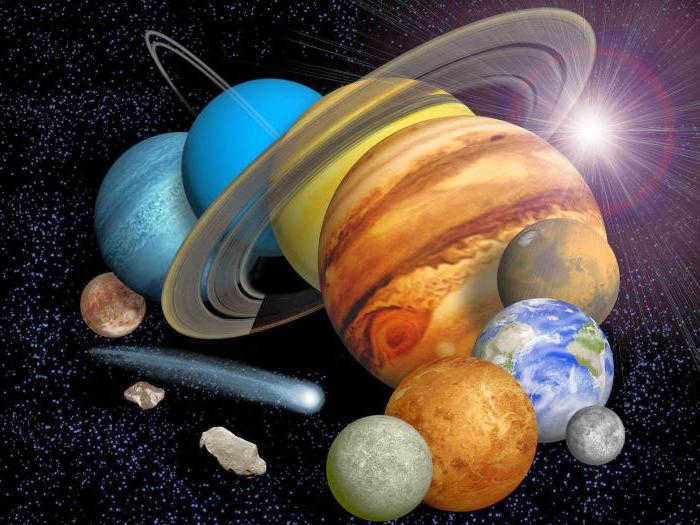
Astronomy: A Philosophical Exploration
The concept of “astronomy” originated in ancient times and continues to thrive in the present day. It delves into the investigation of the fundamental laws governing our universe, forming a close bond with the vast cosmos. Consequently, astronomy was initially regarded as a philosophical science, enabling us to gain insight into our own world by studying celestial entities such as stars, planets, comets, and galaxies. Moreover, it also encompasses the exploration of extraterrestrial phenomena occurring beyond Earth’s atmosphere, including the radiance of the Sun, solar wind, cosmic radiation, and more.
Even the definition of the word “astronomy” itself reinforces this idea: the laws that govern the stars also apply here on Earth, as our planet is a part of the vast cosmos that operates under a unified law. This principle is responsible for the development of various fields of science, such as evolution, physics, chemistry, meteorology, and more. Every aspect of our world evolves as a result of the movements of celestial bodies: galaxies form and evolve, stars die and are reborn. It is crucial to always recognize the origins of every scientific discipline. It is truly unfortunate that astronomy is no longer taught in schools, as there is no substitute for the knowledge and appreciation it provides for the immense scale and value of our universe.


The 20th century
Therefore, observational astronomy and theoretical astrophysics emerged as established scientific fields. Countless new instruments were developed to explore the universe, complementing the age-old invention of the telescope. Data was collected, analyzed, and utilized by theoretical astrophysicists to construct their models, whether they be analytical or computer-based.
The significance of the term “astronomy” has gained immense importance in every aspect of human science, as even the renowned theory of relativity is constructed upon the fundamental principles of astronomical physics. Surprisingly, a majority of the breakthroughs are achieved by non-professional astronomers. It is among the exceptionally limited fields of study that allows individuals from outside of the discipline to actively engage in observations and contribute data.
Many students today often mix up science and belief systems, mainly because of the lack of proper education on the matter in school curriculums. Astrology, for instance, has been widely regarded as a pseudoscience, as it asserts that every aspect of human life, no matter how trivial, is influenced by the positions of celestial bodies. Although both terms share a common origin, their cognitive frameworks are fundamentally divergent.
Astronomy has provided mankind with a significant breakthrough in comprehending the laws of the cosmos. However, this field of science remains largely mysterious and enigmatic, leaving us with more unanswered questions than answered ones. Despite the countless space and terrestrial devices that have been constructed and the groundbreaking discoveries that have been made, our knowledge is but a mere fraction of the vast ocean of information that exists. Currently, we are unable to definitively determine the origins of stellar mass across its entire spectrum, nor can we definitively confirm or refute the existence of extraterrestrial life. The Fermi paradox continues to puzzle us, and the nature of darkness remains elusive. We are still in the dark about the age of the universe and its specific purpose for being.

Ancient Astronomy and its Connection to Religion
In ancient times, astronomers were able to differentiate between stars and planets. They associated this knowledge with the divine, attributing spiritual significance to all celestial bodies. This led to the development of astrology, a field of study that linked the movements of cosmic objects to earthly phenomena such as seasons, rainfall, and droughts.
As a result, priests and other religious figures became the professional astronomers of their time. Many ancient structures, such as Chinese temples and Stonehenge, served dual purposes – both astronomical and religious.
East vs West: Ancient Knowledge and Scientific Advancements
Ancient civilizations in both the East and West have made significant contributions to the development of science and knowledge. In fact, much of the scientific progress we see today may have been built upon the foundations laid by these ancient cultures. For instance, the ancient Romans developed calendars based on the movement of celestial bodies, and their calendar system is still in use today.
China, too, had a rich tradition of scientific exploration and observation. As early as 2300 BC, an astronomical observatory was already functioning in China, as depicted in the photo. Chinese oracles have meticulously documented eclipses and the appearance of new stars for over four thousand years. Detailed records of astronomical observations date back to the sixth century BC in China, while Europe only began its scientific boom in the seventeenth century AD.
One remarkable aspect of Chinese scientific knowledge is their accurate predictions of comet appearances. For thousands of years, the Chinese have been able to predict the appearance of comets with remarkable precision. In fact, the first star atlas was created in China around six thousand years ago, showcasing their advanced understanding of the night sky.

Ancient Greece and the Arab world
In the Middle Ages, Europe put a complete halt to the progress of science within its borders, even condemning the Greek discoveries that had proven to be true and had made significant contributions to the field of astronomy. As a result, classical antiquity has only survived to this day in a limited number of summarized records and compilations.
However, astronomy thrived in Arab nations, and the clergy of the most remote Christian parishes two millennia ago had the ability to compute the precise date of Easter based on the movement of the celestial bodies. The Arabs translated numerous works of ancient Greek astronomers, and it was in those lands that future generations discovered the manuscripts in the depths of surviving libraries. Observatories were constructed in Arab nations as early as the 9th century CE. In Persia, the poet and scientist Omar Khayyam meticulously compared vast amounts of data and reformed the calendar, making it more precise than the Julian calendar and closer to the Gregorian calendar. He was aided in this endeavor by continuous observations of heavenly bodies.
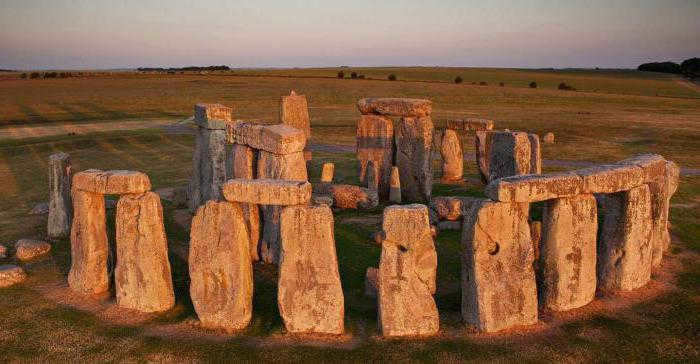

Study of the Celestial Bodies
The discovery of universal gravity is credited to the renowned Isaac Newton. Nowadays, young students are only familiar with Newton’s name in relation to his three laws of physics. What they fail to recognize is the integral connection between these laws and the study of celestial bodies, as astronomy is not part of the school curriculum.





